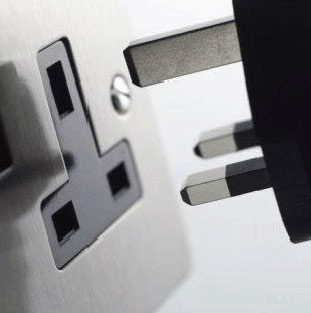 London PAT
London PAT
Specialists in Portable Appliance Testing
What does a PAT test consist of?
We start with a visual inspection checking for:
Damaged flexes
Damaged plugs and equipment (overheating, burn marks, discolouration)
Correctly wired plugs
Correctly rated fuse
Then a series of tests (depending on the class of equipment), they may include:
Earth continuity testing
Insulation resistance
Polarity test
Earth leakage test
All work is undertaken by fully qualified engineers at agreed time spans to match your needs.
The Inspection and tests that are to be carried out are described below, with tests varying dependant upon the class of appliance. However, the testing of all appliances is essential as part regular maintenance to ensure conformity to Electricity at Work Regulations.
Inspection
Without passing the initial inspection, no appliance can be passed as safe. The inspection involves
examination of the plug top, lead and the casing of the equipment. The plug top is checked for the correct
fuse size, adequate cord grip, correct polarity and tightness of terminations, cracking, heat damage and a
plug with insulating pins conforming to current BS standards. The casing of equipment is checked for any
visual damage or cracks and any holes or vents that are apparent must not have a radius greater than 6mm.
Allso there must not be any live parts within 80mm of the aperture
Class of Equipment
Class 1
This is any equipment that has an earth connection from the mains supply. In most cases this equipment
will have exposed earthed metal work and live parts will have basic insulation, e.g., fan heater, computer
etc.
Class 2a
This equipment has no exposed metalwork and has two layers of insulation, e.g., desk calculator,
dictation machine, etc.
Class 2b
This equipment may have exposed unearthed metalwork, which will be separated from live parts by two
layers of insulation, e.g., power drill, etc.
Class 3
This equipment operates from a power supply less than 50v AC and has basic insulation with no earthed
metalwork, e.g., lap top computer, mobile phone, etc.
Test Services
Pat testing or portable appliance testing is an important part of any health & safety policy. This site
is intended as a guide to both the legal implications and to the technical requirements.
The Health & Safety Executive states that 25% of all reportable electrical accidents involve portable
appliances. The Electricity at Work Regulations place a legal responsibility on employers, employees and
self-employed persons to comply with the provisions of the regulations and take reasonably practicable steps
to ensure that no danger results from the use of such equipment. This in effect requires the implementation
of a systematic and regular program of maintenance, inspection and testing. The Health & Safety at Work
Act (1974) places such an obligation in the following circumstances:
1. Where appliances are used by employees.
2. Where the public may use appliances in establishments such as hospitals, schools, hotels, shops etc.
3. Where appliances are supplied or hired.
4. Where appliances are repaired or serviced.
The level of inspection and testing required is dependant upon the risk of the appliance becoming faulty,
which is in turn dependant upon the type of appliance, the nature of its use and the environment in which it
is used.
The legislation of specific relevance to electrical maintenance is the Health & Safety at Work Act 1974,
the Management of Health & Safety at Work Regulations 1999, the Electricity at Work Regulations 1989,
the Workplace (Health, Safety and Welfare) Regulations 1992 and the Provision and Use of Work Equipment
Regulations 1998.
The Health & Safety at Work Act 1974 puts the duty of care upon both the employer and the employee to
ensure the safety of all persons using the work premises. This includes the self employed.
The Management of Health & Safety at Work Regulations 1999 states:
"Every employer shall make suitable and sufficient assessment of:
(a) the risks to the health and safety of his employees to which they are exposed whilst at work, and
(b) the risks to ensure the health and safety of persons not in his employment arising out of or in
connection with the conduct by him or his undertaking."
The Provision and Use of Work Equipment Regulations 1998 states:
"Every employer shall ensure that work equipment is maintained in an efficient state, in efficient working order and in good repair."

